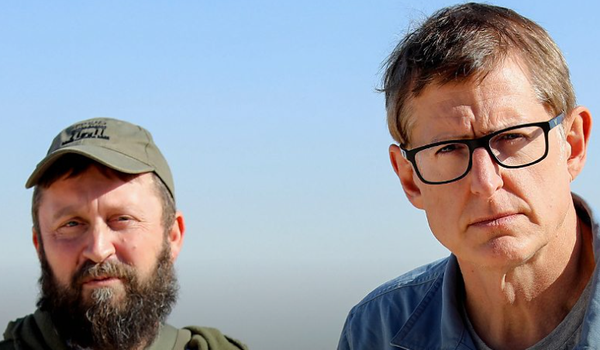How Minds Made Language (5): Neuroanatomy

This fifth post of the series will explore the neuroanatomical prerequisites for language. Specifically, it will focus on the roles of the ventral parietal cortex (VPC), mirror neurons, and overall neocortical volume.
VPC
All the previously mentioned capacities are forms of social intelligence; if language evolved from them, the brain regions specified for language should be near areas specialised for social intelligence.[i] Damasio (1994) demonstrated that some emotional and social behavioural abnormalities are caused by lesions located in the prefrontal cortex.
In monkeys, the VPC (F5 region) is involved with the physical aspects of imitation, but the rostral part is homologous with Broca’s area.[ii] In humans, Broca’s area, which is specialised for language use, overlaps with the human VPC[iii]; activity related to verb usage and other semantically complex language aspects overlap more with the VPC than that of auditory aspects.[i] This clear link between language and social intelligence’s localisation in the VPC supports the idea that language evolved from social intelligence.
Mirror Neurons

As previously mentioned, imitation is necessary for language, but the presence of mirror neurons is a prerequisite for imitation.[iv] Mirror neurons fire when performing an action or when observing others perform known actions. They fire when monkeys enact ‘grasping’ behaviour or when observing grasping in others.[v]
Research on human brains has also found mirror systems in a similar area to that of monkeys. Rizzolatti et al. (1996) used PET scans to reveal that grasping tasks caused activation of Broca’s area in human brains.[iii] Massimo Matelli argues that Broca’s area is homologous to the F5 region in monkey brains.[vi] Arbid (2003) outlines three ways in which a mirror system serves language: it enables individuals to learn by imitation, social interaction, and self-correction.[vii] It is argued that Broca’s area, specialised for language in humans, was co-opted from its original function of understanding and producing motor acts (Rizzolatti et al., 1995, as cited in Arbid, 2003). This manual-gesture-based mirror-system is seen as a proto-Broca’s area, enabling a ‘prelanguage’ to emerge (composed of gestures and orofacial expressions), eventually adapting to have primary control over the vocal anatomy (Arbid, 2003).
Neocortical volume
Neocortical volume enables a larger group size. It has been found that there is a relationship between increasing primate group size and increasing neocortical volume.[viii] A linear relationship between primate group size and time spent maintaining relationships through ‘grooming’; any groups that do not meet the expected grooming time for their size undergo fission. He states that social interaction can occupy up to 20% of primate activities. However, resting and socialising activities can occupy up to 43% of a chimpanzee’s time; this is feasible as 20% of this is expected for grooming and the remaining 23% does not impose an unfeasible time-budget constraint.

However, human group size (predicted by neocortex volume) equates to 150-200 individuals.[vii] The maximum population that could be maintained for New Guinea Neolithic settlements without adopting a hierarchical or policing structure was 150 individuals. Moreover, the smallest units within modern armies have a maximum number of 200 individuals (with assistance from modern technologies), suggesting this is the maximum number of people possible to function efficiently as a team. This ideal group size equates to an unfeasible time-budget constraint of 62% expected grooming time.
However, reducing group size is not always possible as environmental factors determine the minimum group population.[vii] Therefore, language evolved as a time-efficient bonding mechanism to maintain group cohesion; language facilitates bonding behaviour with three people at once, enabling us to maintain relationships with approximately 150 individuals.[ix] Moreover, it enables us to better categorise unknown individuals into a social hierarchy, in which offence can be prevented by following expected etiquette behaviours (Dunbar, 1993).[vii]
References
[i] Worden, R. (1998). The evolution of language from social intelligence. In J. R. Hurford, M. Studdert-Kennedy, C. Knight (Eds.), Approaches to the evolution of language: Social and Cognitive Bases (pp. 148-156). Cambridge, New York: Cambridge Univ. Press.
[ii] Rizzolatti, G., & Arbib, M. A. (1998). Language within our grasp. Trends in Neurosciences, 21(5), 188-194. doi:10.1016/s0166-2236(98)01260-0
[iii] Musso, M., Moro, A., Glauche, V., Rijntjes, M., Reichenbach, J., Büchel, C., & Weiller, C. (2003). Broca's area and the language instinct. Nature Neuroscience, 6(7), 774-781. doi:10.1038/nn1077
[iv] Burling, R. (2005). The talking ape: How language evolved. Oxford: Oxford University Press.
[v]Arbib, M. A. (2003). The Evolving Mirror System: A Neural Basis for Language Readiness. In 2290526179 1565707025 M. H. Christiansen & 2290526180 1565707025 S. Kirby (Authors), Language evolution (pp. 182-200). Oxford: Oxford University Press. doi:10.1093/acprof:oso/9780199244843.003.0010
[vi] Studdert-Kennedy, M. (1998). The particulate origins of language generativity. In J. R. Hurford, M. Studdert-Kennedy, C. Knight (Eds.), Approaches to the evolution of language: Social and Cognitive Bases (pp. 208-209). Cambridge, New York: Cambridge Univ. Press.
[vii]Arbib, M. A. (2003). The Evolving Mirror System: A Neural Basis for Language Readiness. In 2290526179 1565707025 M. H. Christiansen & 2290526180 1565707025 S. Kirby (Authors), Language evolution (pp. 182-200). Oxford: Oxford University Press. doi:10.1093/acprof:oso/9780199244843.003.0010
[viii] Dunbar, R. (1993). Coevolution of neocortical size, group size and language in humans. Behavioral and Brain Sciences, 16(4), 681-735. doi:10.1017/s0140525x00032325
[ix] Power, C. (1998). The Gossip Hypothesis. In J. R. Hurford, M. Studdert-Kennedy, C. Knight (Eds.), Approaches to the evolution of language: Social and Cognitive Bases (p. 113). Cambridge, New York: Cambridge Univ. Press.




